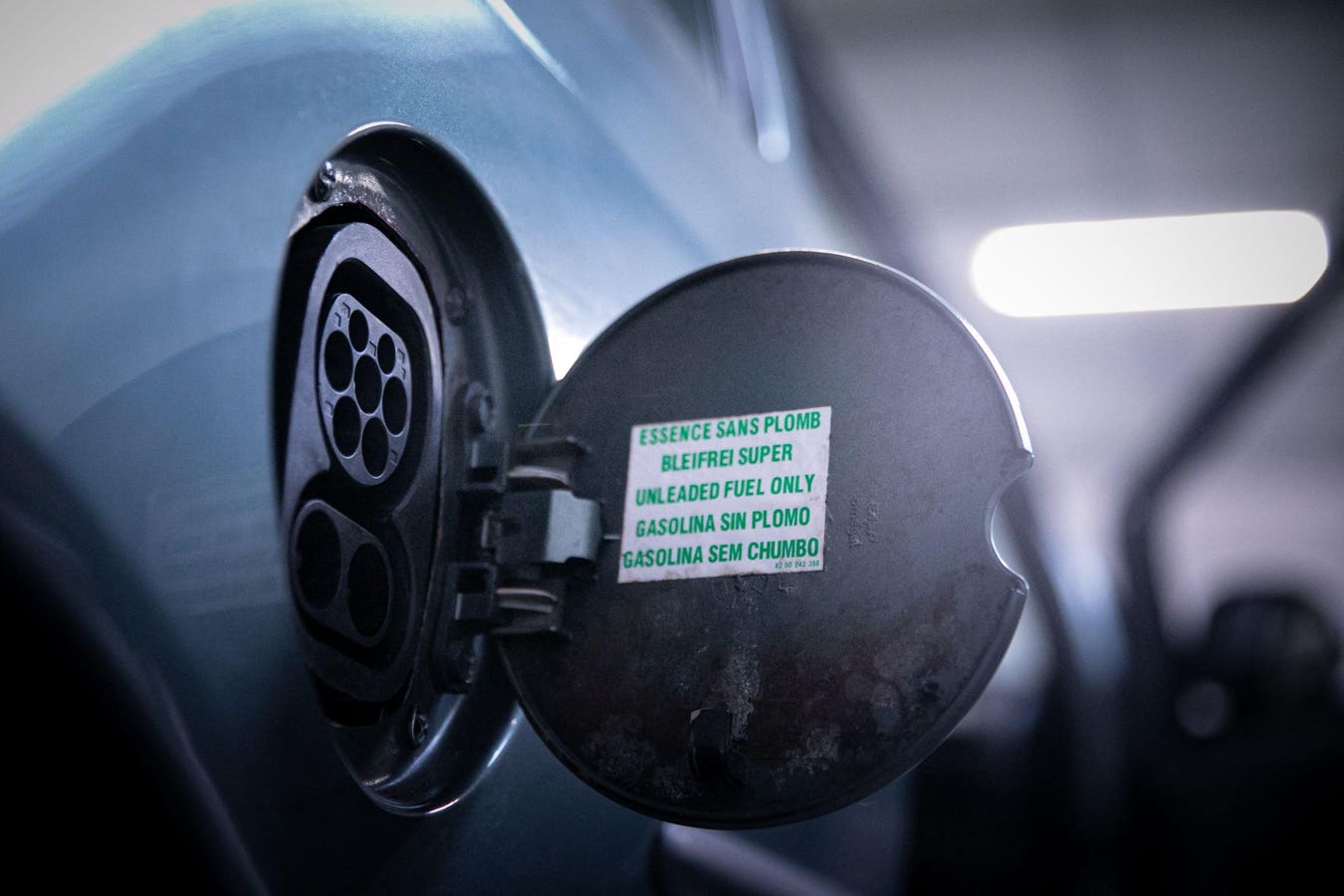Physical Address
304 North Cardinal St.
Dorchester Center, MA 02124
Physical Address
304 North Cardinal St.
Dorchester Center, MA 02124

This photograph taken on January 26, 2023, shows the charging plug of an electric Lormauto Twingo … [+]
One of the big issues facing the transport and energy sectors as many people move to electric vehicles is what to do with the batteries once they have reached the end of their lives.
Conventional wisdom says while you can recycle the batteries, the end result will not be as efficient and you cannot recover all of the materials,
But new research carried out by Imperial College London for U.K-based clean tech group Altilium suggests EV battery materials can match, and even surpass, the performance of virgin mined materials.
Researchers examined Altilium’s recycled cathode active materials (CAM) and found distinct improvements in purity, morphology and electrochemical performance, compared to commercially available materials.
The study claimed these benefits have the potential to deliver significant improvements in battery performance – including longer battery life, faster charging times and lower costs.
Altilium also recently announced the start of recycling operations for lithium iron phosphate (LFP) batteries.
The company’s chief operating officer, Dr. Christian Marston said the rise of LFP batteries presents both challenges and opportunities for recyclers in a statement.
But he added by expanding its capabilities to process LFP batteries, it is strengthening the U.K’s battery supply chain and supporting the transition to a cleaner, more sustainable transport sector
Last week, the Munich-based startup tozero announced it has started producing EV battery-grade recycled graphite at an industrial scale.
The startup’s process achieves more than 80% graphite recovery while preserving its morphological integrity on an industrial scale, and the successful cell test showcases comparable performance to a battery cell made out of virgin graphite.
The co-founder and chief executive of tozero, Sarah Fleischer said the company plans to produce more than 2,000 tonnes of recycled graphite by 2027 in an interview, with plans to scale beyond 10,000 tonnes by 2030.
Fleischer said EV battery producers are largely dependent on Chinese supply chains for graphite and there is a “tsunami of battery waste” coming as more drivers move to electric vehicles.
But she added this breakthrough will enable graphite to be recovered much closer to home, creating a circular loop.
“We are 100% dependent on graphite imports here in Europe, and you will always need graphite for any type of battery,” she told me.
“We’ve already seen our recycled lithium successfully re-enter Europe’s supply chain, and now we’re proving the same for graphite.
“Despite being essential for battery stability, graphite is often overlooked in recycling, yet it is even more critical and geopolitically exposed than lithium,” she added.
In November last year, European Metal Recycling (EMR) announced it was working alongside the University of Birmingham to explore new ways to sustainably and efficiently recover graphite during the recycling of end-of-life EV batteries.
EMR’s managing director for technology and innovation, Roger Morton said much of the attention has so far focused on recovering metals such as lithium, cobalt and nickel from these vehicles’ high-performance batteries in a statement.
But Morton added the quantities of graphite present make finding environmentally friendly and economical ways of recovering this critical material a growing priority.
And another U.K. company, Fellten, has found another use for second-life EV batteries in the shape of its new modular energy storage system, the Charge Qube.
The Charge Qube integrates second-life EV batteries in stackable container units, which can be rapidly deployed without planning permission.
Fellten chief executive Chris Hazell said it addresses the urgent need for flexible, sustainable energy solutions, which can be rapidly deployed anywhere in a statement.
“By leveraging second-life EV battery packs and modular containerised design, we are delivering a cost-effective, scalable product that supports businesses and public infrastructure with reliable energy and fast EV charging,” said Hazell.